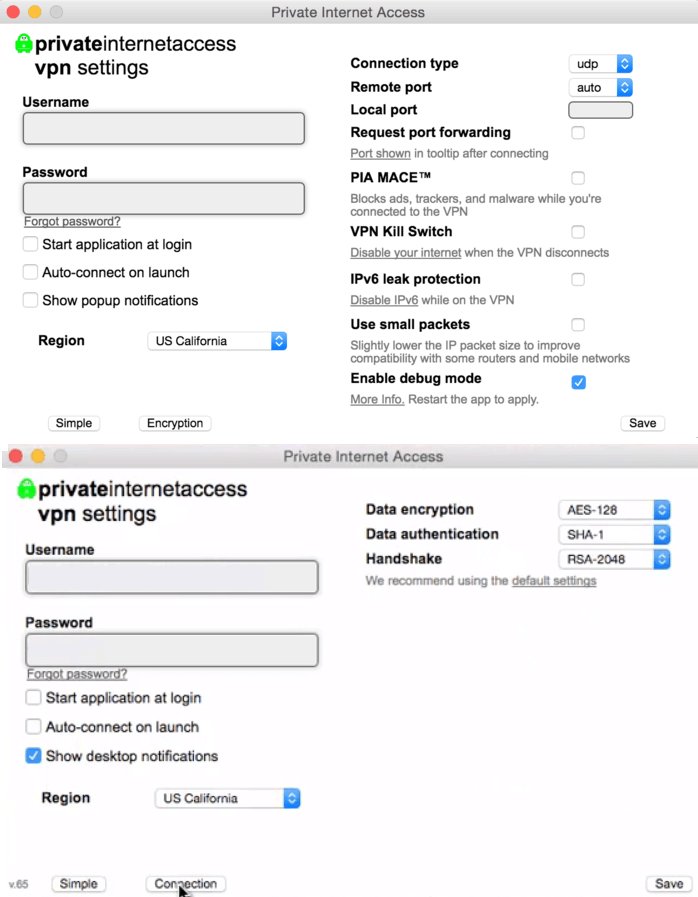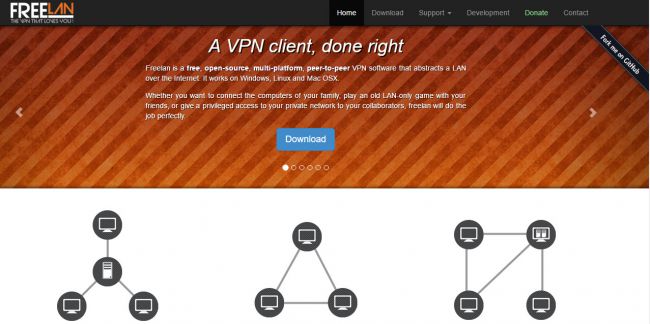-
Private Internet Access Client For Mac카테고리 없음 2020. 4. 10. 11:27
Installing a Virtual Private Network is an effective way to shield your personal privacy as you surf the web. And Private Internet Access (PIA) is one of the most respected VPNs around. Offering a mix of strong encryption, easy to use apps, and reliable speeds, PIA provides what most everyday users need. However, problems can arise with even the best VPNs, and PIA is no exception. Sometimes, PIA won’t connect, leaving users without protection. But that’s not usually a massive deal. By using simple workarounds, anyone can solve the issue of Private Internet Access not connecting.
Let’s see how it’s done. Why do VPNs sometimes have difficulty connecting? First off, it’s important to understand why VPNs might struggle to connect. There are a number of possible reasons for this, and any one (or more) of them could be stopping you from logging on.
Here are some of the most common issues we’ve come across when using VPNs:. Servers are down In some cases, the problem lies with the servers of your provider.
Server banks are regularly taken offline for maintenance, and all sorts of small issues can dent their speeds. If this is the case, switching to another server should resolve the issue. Ports To connect to a VPN, your computer needs to go through one of its many ports – and not all of these are capable of handling VPN connections. This could be the problem. Protocols Protocols are the tools used by VPNs to create secure tunnels between your computer and the web. These protocols can sometimes conflict with your internet connection, and switching between them can bear results (see below for how to do this with PIA).
Free Private Internet Access
Firewalls While PIA should work with most firewalls, these barriers can also create conflicts. It may be necessary to turn off your firewall protection if Private Internet Access keeps disconnecting.
Antivirus The same sort of problems can be caused by antivirus packages, which scan outgoing data. This usually just slows down your connection but can be the root cause of PIA not connecting as well. The VPN reports that it has long-standing issues with products from Kaspersky, so if you use their virus-checking tools, you may be out of luck. Too many devices PIA allows users to connect up to 5 devices with a standard package.
If you’ve added one too many, this can cut out your connection. Routers PIA is known to have problems with routers which don’t feature “hole punching”, so it might also be worth contacting your router maker to check whether this is an issue with your hardware. Some VPNs will also operate bandwidth restrictions for heavy data users. However, this isn’t supposed to be a problem with PIA, which says that it enforces no limits. What to do when you find Private Internet Access not connecting If PIA won’t connect, it’s time to get troubleshooting, and you have a number of ways to do so.
None of them are particularly complex, and there’s a good chance one of them will deliver a solution. Change the connection ports used by PIA As noted above, the port you use to connect to the web can be a reason why Private Internet Access keeps disconnecting. Here’s how to change the port in seconds:.

Make sure you’re totally disconnected from. Load up the Private Internet Access client app. Go to the Advanced Settings menu.

At the right-hand side, you’ll see a window marked Connection. The settings here allow you to change the protocol and the ports you are using It’s important to enter the right combinations of protocols and ports. Some combinations to try include:.
UDP protocol and ports: 9201, 8080, or 53. TCP protocol and ports: 80, 110, or 443 When you’ve entered any of these combos, enter the PIA app and try to connect as usual. You may well find that your worries about PIA not connecting have disappeared.
Try manually assigning DNS settings If you can log onto PIA servers, but can’t browse the web, DNS could be the reason why PIA won’t connect. PIA allow you to manually assign DNS information, and this usually works around web connection problems:.
Log off the VPN. Go to the settings menu and toggle the option so that protection is off. Make sure you save the settings at this stage. Go to the Windows Start Menu and type “ncpa.cpl” into the run box.
You’ll now see a Network Connections box. Go to the settings for your ethernet or wi-fi adapter. Head to the Properties menu for the adapter. Choose “TCP/IP(v4)” as your protocol, and make sure the option to Obtain an IP address automatically is flagged.
In the box for your main DNS server, enter “209.222.18.222”. For the alternate DNS, type “209.222.18.218”. Now, go to the properties tab for your TAP adapter (which is also found in Network Properties. Choose TCP/IP(v4) as above, and type in the same DNS information. Close the app, and reboot your system. When you load up PIA and your browser, you may well find that your connection issues have been resolved Switch to the OpenVPN app is the default protocol used by PIA, but you can also connect to the network using one of the open source OpenVPN apps. So if you find Private Internet Access not connecting, it’s worth giving OpenVPN a try.
Head to OpenVPN website and download the OpenVPN installer. Open up the OpenVPN archive by right-clicking and choosing to Run as Administrator. When the installation is finished, download the PIA OpenVPN config files.
Extract the archive into the OpenVPN Config folder. Open up the OpenVPN app, choose a server, and enter your PIA user credentials Sort out connections with PIA and enjoy total security PIA is an elite VPN, and it should work with almost any setup, including Mac, Android and iOS devices – as well as Windows.
The workarounds discussed here can often furnish a solution, but if they aren’t helpful, be sure to contact the PIA support team. They will be happy to provide in-depth solutions to even the smallest connection issues. Recommended reads.
DescriptionWhen it comes to protecting your online privacy, why settle for anything less than the world’s most-trusted VPN service? Now with a new and improved client, Private Internet Access offers an even more secure and intuitve way to mask your identity, unblock websites, and surf the Web at blazing speeds. Private Internet Access uses Powerful Blowfish CBC encryption to keep your data under lock and key, while unlimited bandwidth ensures your browsing speed stays lightning quick. And, with a proven no-logging policy, it’s no mystery why Private Internet Access has won awards from the likes of PCMag, Lifehacker, and Tom’s Guide. “Named Editor's Choice by PCMag and Tom's Guide!. Bypass censored & geographically blocked websites, apps and services. Enjoy a more intuitive & robust experience via the new VPN client.
Protect your identity by masking your location & IP address. Block ads, trackers & malware w/ the new MACE feature. Surf at blazing speed on 5 devices simultaneously w/ unlimited bandwidth. Encrypt your data w/ the cryptographically secure Blowfish CBC algorithm. Includes SOCKS5 proxy. Block unwanted connections w/ an advanced firewall.
Private Internet Access Client Support
Access more than 3,160+ servers in 33 countries Strict No Logging Policy! Reviews. PCMag: 'Private Internet Access offers a robust, full-featured service, at an unbeatable price.' . Tom's Guide: 'Private Internet Access is still the VPN service to beat, with fast speeds, thousands of servers and cheap prices.' . BestVPN: 'Strong encryption options, an excellent privacy policy, and plenty of servers around the world - at an extremely low price point - make PIA an attractive VPN option for just about anybody.'